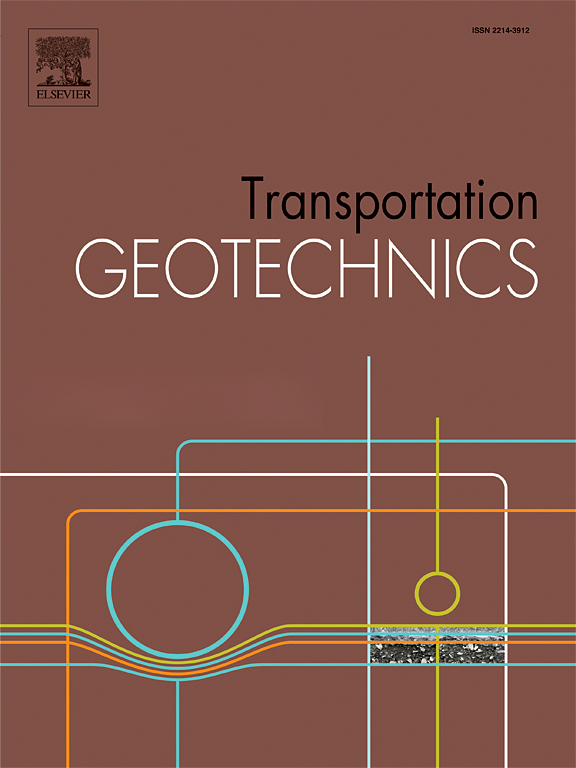Simplified numerical simulation of vibrocompaction in sand
IF 4.9
2区 工程技术
Q1 ENGINEERING, CIVIL
引用次数: 0
Abstract
Loosely deposited granular soils can be strengthened through cyclic loading, with vibrocompaction being a widely used and effective method. However, the lack of rational design methods stems from the complex interaction between soil and vibrator, as well as the inaccurate description of plastic accumulation caused by small strains in soil regions distant from the vibrator. In this work, we investigate Osinov’s hypothesis which suggests that the soil densification primarily results from numerous cycles of small-amplitude strains rather than wave propagation effects (including reflection and dispersion). In this way, the complex dynamic interaction between vibrator and soil (contact forces, large deformations around the vibrator, high frequency waves emanating from the vibrator, resonance effects, soil flow, etc.) is replaced by the effect of the vibrator on the soil: cyclic deformations applied repeatedly to the soil, with amplitudes varying both spatially and temporally. Quasi static finite element simulations using a combined hypoplastic and high cyclic accumulation model, with a prescribed field of strain amplitudes, show that the proposed simplified approach is able to qualitatively capture in-situ observations. The impact of different factors such as probe spacing, insertion depth, probe movement, and even the sequence in which the probe are driven can be reproduced by the model. The model’s predictions may complement on-line compaction control methods.
求助全文
约1分钟内获得全文
求助全文
来源期刊

Transportation Geotechnics
Social Sciences-Transportation
CiteScore
8.10
自引率
11.30%
发文量
194
审稿时长
51 days
期刊介绍:
Transportation Geotechnics is a journal dedicated to publishing high-quality, theoretical, and applied papers that cover all facets of geotechnics for transportation infrastructure such as roads, highways, railways, underground railways, airfields, and waterways. The journal places a special emphasis on case studies that present original work relevant to the sustainable construction of transportation infrastructure. The scope of topics it addresses includes the geotechnical properties of geomaterials for sustainable and rational design and construction, the behavior of compacted and stabilized geomaterials, the use of geosynthetics and reinforcement in constructed layers and interlayers, ground improvement and slope stability for transportation infrastructures, compaction technology and management, maintenance technology, the impact of climate, embankments for highways and high-speed trains, transition zones, dredging, underwater geotechnics for infrastructure purposes, and the modeling of multi-layered structures and supporting ground under dynamic and repeated loads.
 求助内容:
求助内容: 应助结果提醒方式:
应助结果提醒方式:


